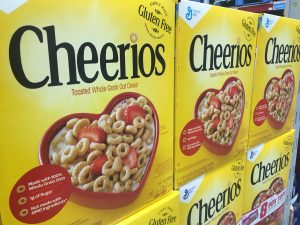4.4 Income Approach to measuring GDP
We have seen in the flow diagram Fig 4.1 in Chapter 4.1 that the production of goods and services generates factor incomes to households. The production of a given value of goods and services generates an equal value of total income. Gross domestic income (GDI) equals the total income generated in an economy by the production of final goods and services during a particular period. It is a flow variable. Because an economy’s total output equals the total income generated in producing that output, GDP = GDI, we can estimate GDP either by measuring total output or by measuring total income.
GDP Calculation

Consider a $4 box of Cheerios. It is part of total output and thus is part of GDP. Who gets the $4? Part of the answer to that question can be found by looking at the cereal box. Cheerios are made from oat flour, wheat starch, sugar, salt, and various vitamins and minerals. Therefore, part of the $4 goes to the farmers who grew the oats, the wheat, and the cane from which the sugar was extracted. Workers and machines at General Mills combined the ingredients, crafted all those little O’s, toasted them, and put them in a box. The workers were paid part of the $4 as wages. The owners of General Mills and the physical capital it used received part of the $4 as profit. The Cheerios box was made from a tree, so a lumber company somewhere received part of the $4. The truck driver who brought the cereal box to the grocery store got part of the $4, as did the truck’s owner and the oil that fueled the truck. The clerk who rang up the sale at the grocery store was paid part of the $4. And so on.
How much of the $4 was income generated in the production of the Cheerios? The answer is simple: all of it. Some of the money went to workers as wages. Some went to owners of the capital and natural resources used to produce it. Profits generated along the way went to the owners of the firms involved. All these items represent the costs of producing the Cheerios and also represent income to households. As it is with Cheerios, so it is with everything else. The value of output equals the income generated as the output is produced. So, for the aggregate economy, the GDP estimated using the Expenditure Approach (section 4.1) is equal to the GDP estimated using the Income Approach.

